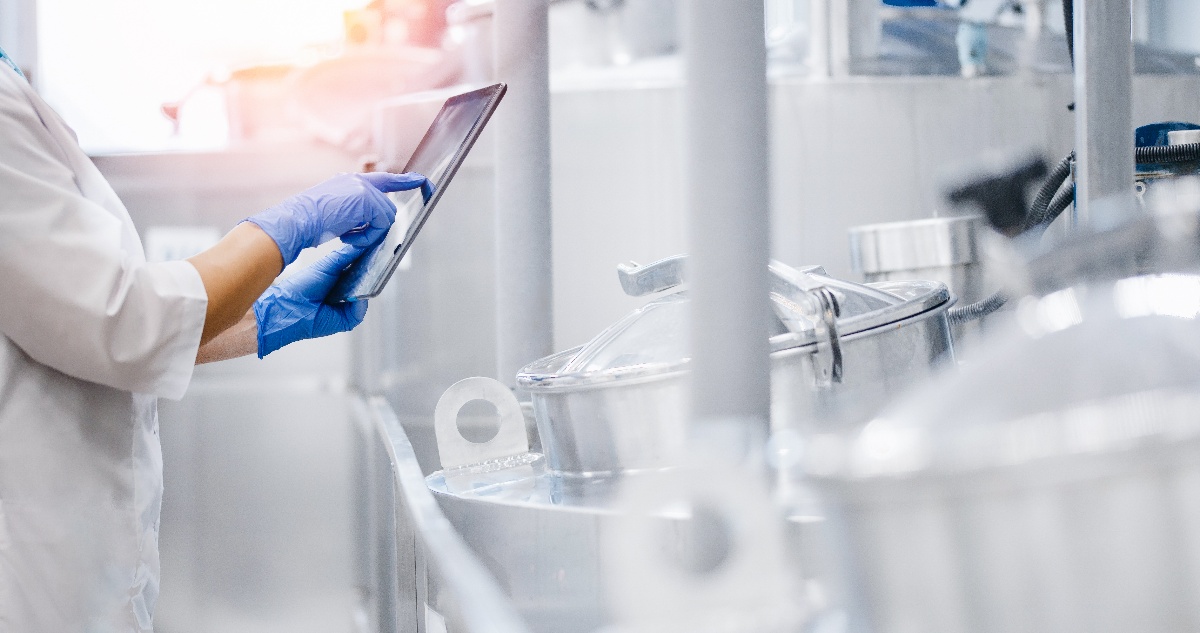10 Things To Know About Product Lifecycle Management
Originally developed for the manufacturing industry, Product Lifecycle Management (PLM) can be applied to other industries too. Product development in restaurants, grocery stores, convenience stores, and general food service brands all have the same goals —meet customer requirements, ensure food safety, and make a profit. And for this, you need proper product lifecycle management.
Whether you are developing a new product or co-developing a private label product, the cornerstone of any quality management program is effective data management of your product specifications—from inception to approval, and every revision and variation thereafter.
If you’re still in the dark, don’t worry. Below we answer the Top 10 frequently asked questions about product lifecycle management.
1. What is Product Lifecycle Management?
Product Lifecycle Management is the process of managing a product, and its associated data, throughout its entire lifecycle for each stage of its development—from ideation right through to distribution and sale. This includes any product changes over time and ultimately it may end with discontinuation.
To do this, you need a way to integrate all the different aspects of the product development process—from raw material selection to finished product design, right through the commercialization and scale-up phases, to ultimately monitoring specification compliance and changes over time.
2. How does PLM work?
PLM is essentially the whole process behind the product you provide—from inception to the ultimate discontinuation thereof. You start by creating a name for your product and deciding its purpose/target market, what should be in it (ingredients), where it should come from (facilities/vendors), and all other necessary requirements for making it and maintaining its integrity over time like categorization and identifying information, processing control points, finished product standards, packing, labeling, storage conditions, etc.).
A finished product can be exclusively assembled/manufactured by your own company, or the process could be a joint venture. Either way, all ingredients (whether common or sub-formulations) have to be sourced from somewhere, and the finished product manufactured somewhere. Thus, you must decide which vendors and production facilities to involve (if they are already part of your approved supplier list), or whether to onboard new vendors. New vendors require proper vetting before onboarding, and existing vendors should comply with all your quality standards and relevant regulatory requirements. Vendors need to be properly informed of all your product-related requests (whether for raw materials, services, or lab testing) at all stages of PLM.
Eventually, you have a finished product to be manufactured. But this is not the end. Most products usually undergo numerous revisions or variations throughout their lifecycle. This could involve updated formulations, new ingredients, new vendors or new manufacturing facilities, and a host of other things. They may differ for various markets, or different suppliers. All these processes must be effectively managed.
All parties involved in production must be audited regularly and continually to ensure food safety, and your products should be tested regularly for product specification compliance. Additionally, all ingredients should be readily traceable (i.e., where they originate from, and when) at any point in time.
PLM also concerns the managing and distinguishing between product types, e.g., everyday products, limited time offers (LTO), or even test products.
Ready to jump in? Explore CMX's PLM Solutions:
3. What is Product Lifecycle Management Software?
PLM Software allows you to integrate and automate all your product management processes using a single digital platform. It also allows all those who are involved in the production process to stay informed and keep track of the latest requirements and updates. Given the immense complexity of products and supply chains today, it is crucial to be able to keep track of all your ingredients and their sources, certifications, claims, vendors, processes, and requirements in a centralized digital repository.
PLM software designed specifically for food has many advantages over a traditional office software (MS Word, MS Excel, etc.) and document storage system approach. Key features that can make your life easier include the ability to collaborate internally and externally with vendors, the ability to compare product histories (revisions, updated formulations, etc.) visually side-by-side, workflow automation, automated task assignment to people responsible for different stages of the process, ability to view completed and pending tasks, and a host of other management options.
Ideally, the PLM software you use integrates with your supplier management system, quality assurance monitoring system, and crisis management system. Or better yet, your PLM software can be part of an integrated platform for managing supplier and product quality.
4. What Are the Essential Elements of A PLM System?
One of the most important elements of a PLM system (beyond its ability to handle your product types) is whether it is a stand-alone solution or if it integrates easily with the other applications in your environment for managing your suppliers, the ongoing quality and safety of your products, and addressing product incidents/product complaints, withdrawals, and recalls.
In other words, you need an integrated system that enables you to do everything necessary for the efficient management of your products, their quality and safety, and the related information needed to track their sources, and manage any defects quickly and easily.
A PLM system, as part of an overall Quality Management System (QMS), should enable you to: create and approve new products, compare product histories (e.g., revisions, updated formulations, etc.), trace ingredients in the case of recalls, manage labels and graphics, specify product packaging and storage requirements, view all aligned facilities involved with manufacturing, check facility certifications, view product claims and allergens, and even view related Tier 2 supplier information.
5. What Are the Benefits of A PLM System?
The main benefit of a PLM system is that it streamlines everything in the product commercialization process, thus making the steps more efficient. And an optimized workflow process ultimately leads to increased profits. This is because you reduce errors and wastage by putting a safer, higher quality product on the market faster, which increases your sales opportunities.
Some other benefits of a PLM system include:
- Prototyping (test products) cost less and is easier to implement
- Time savings (and thus cost savings) by re-using product templates for new products or variations of existing products
- Real-time updates (e.g., new ingredients, formulations, facilities) make product optimization easy
- Pinpoint aligned facilities for, and all products containing, any ingredient instantly in case of recalls
- Assign and track tasks related to product development, and escalate any that are overdue
- Efficient vendor communication (e.g., real-time requests for new ingredients or facilities, or joint collaborations)
6. What are Legacy PLM Systems?
Legacy PLM Systems refer to outdated first-generation PLM or Product Development Management systems. Although they are still functional, data ends up being fragmented across different software applications. In other words, Legacy PLM systems are not centralized. As product innovation becomes increasingly complex, with more and more vendors involved in any one single product, Legacy PLM Systems reduce flexibility, limit collaboration, and waste valuable time.
Not having a centralized platform results in an IT design that continually increases in complexity, which becomes costly and difficult to manage. In essence, Legacy PLM Systems are just not designed to cope with the complexities of modern-day technological demands, since they require too much customization and maintenance.
7. Why Do Businesses Need PLM?
Businesses need PLM to effectively create and manage products, together with all other processes involved with production and safety. This includes recording product properties (e.g., chemical and physical), ingredients (e.g., allergens), and claims; keeping a record of product changes (updating product ingredients and formulations; comparing version histories); managing and keeping track of vendors/aligned facilities involved (e.g., certifications and compliance, Tier 2 information); and much more.
Although PLM was originally designed for collaborating on product information and design, it was focused only on employees (i.e., internal). This greatly limited its functionality, since it excluded other parties involved in the process, such as sales and marketing teams, and vendors/aligned facilities. That’s why today’s PLM Systems have superseded Legacy PLM, and why digital and centralized platforms with greater functionality and integration are crucial to the success of modern days businesses.
8. What Is Cloud-Based PLM?
Cloud-Based PLM has all its data and processes stored in the cloud, and thus differs from on-site PLM by allowing real-time communication and collaboration by all sectors involved in PLM from any location with an internet connection. With cloud-based benefits, data is protected and can be accessed at any time, anywhere, by any authorized employee involved in PLM-related processes.
9. What are the Stages in a Product’s Lifecycle?
Generally, the stages in a product’s life cycle are:
- Introduction, where the product is created and put into the marketplace;
- Growth, where the product starts to gain popularity and sales increase;
- Maturation, where product popularity and customer expectations dictate what updates/reformulations are required (which can be numerous), and
- Decline, where the product starts losing popularity/interest and reaches the end of its life, ultimately leading to its discontinuation.
10. What is Specification Management Software?
Specification Management Software allows you to manage product specifications across your entire supply chain digitally. It usually includes templates for defining and managing product types, formulations, finished product standards, processing control points, attachments, and more. By digitizing this information rather than managing documents, you are more easily able to collaborate, make and track changes, and search and report on key data elements.
Within a retail food establishment, there are a variety of products, together with their associated specifications. Oftentimes specifications for raw materials, ingredients, or finished products, are kept in different departments, making any updates potentially challenging.
To achieve quality excellence, quality and safety must be part of your product design from the get-go. CMX1 equips you with the right tools you need to innovate.
Bring new products to market with control, with features to ensure consistency, product compliance, and food safety over time.





